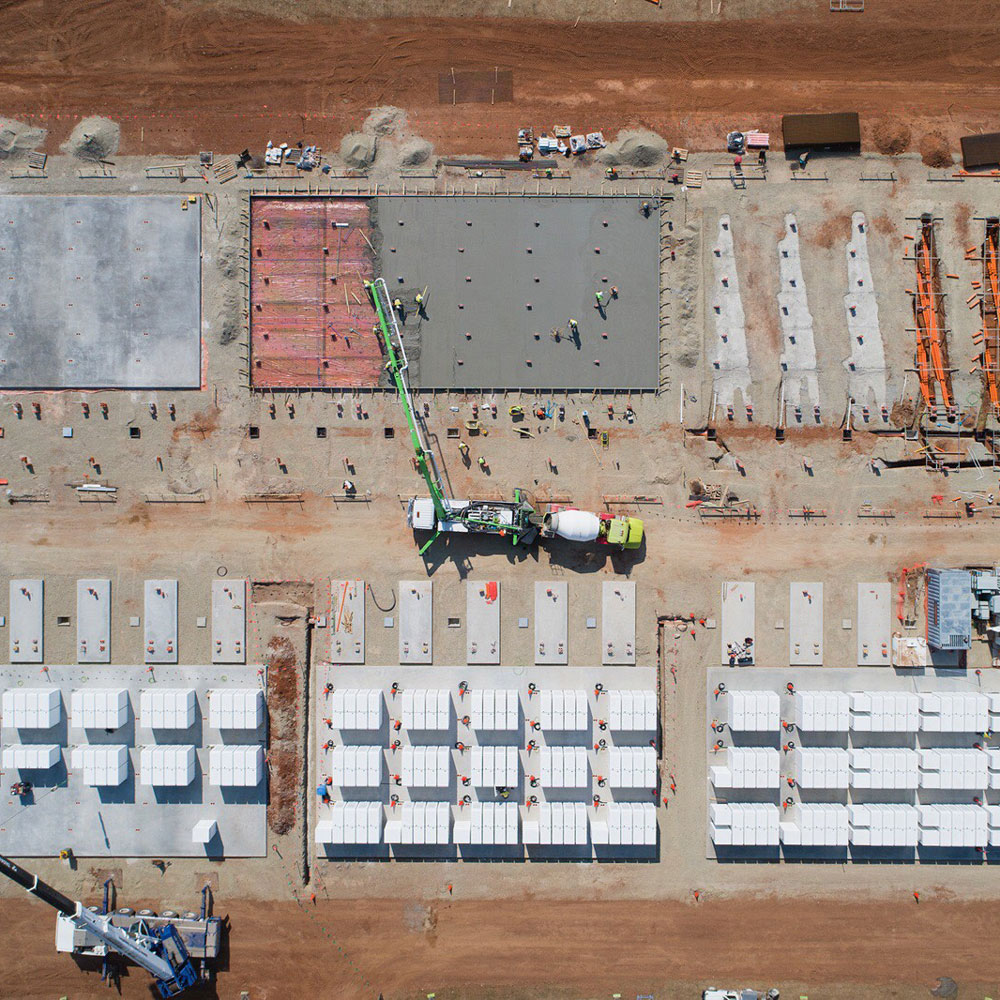In general there is little to argue with here. Because the large deals are contract by contract and the payment staging is often determined by regulatory Capex and price amortization regulations, it's hard to generalize unless we have the country by country and dealt by deals details. One significant point related to income recognition is the issue of performance bonds. For large projects there are almost invariably performance bond requirements. Those do usually allow cash flow recognition prior to final completion and acceptance but often preclude income recognition under GAAP. In some cases a percentage of completion income recognition is possible. Because we have no details disclosed about TE large-BESS deals, we do not know the sequences.Remember, there is simply a delay between delivery and revenue recognition (in stage). If you plot them both over time, there is generally just a shift to the left for revenue recognition. That's it. I would advise people not to separate deferred revenue components in their modeling as it just offers an opportunity to make screw up assumptions.
Let's assume Tesla grows Megapack production at a 70% YoY rate. This seems quite aggressive at a consistent rate - far higher than automotive growth, but possible. In 2027, they would produce ~ 100 GWh. So we can roughly assume in 2028 100 GWh worth of Megapacks will be recognized.
Operating marging of 15% x 100 GWh x $300 / kWh ASP gives you $4.5 billion in operating profit.
No offense, but getting more than $10 billion means you are making some pretty crazy assumptions somewhere. You are claiming this is just from 2 megapack factories so that is 80 GWH at most of revenue recognized in a year (vs my 100 GWh).
To get similar to your numbers, I am calculating you are using (or following someone else using) numbers like 30% operating margins and $500 / kWh ASP. Neither of those are happening, especially the ASP. ASPs are already lower than that, and Shanghai ASPs will definitely be lower than Lathrop much like automotive.
Operating margin assumption of 30% is too high IMO. Gross margins might top out at 30% not operating, but they won't stay there long term.
...
More importantly, institutional investors won't value it at those high margins. My guess is they model 15%.
It has been years since I dealt with those directly, when I did it was as issuer of performance bonds and financing of work in progress for the prime contractors. Those were fossil fuel and hydroelectric projects so they were of longer tenor than even the large-scale BESS tend to be. The accounting conventions are the same, but treatment of work-in-progress and payment staging are highly variable.
For Tesla all these issues apply, plus the almost ubiquitous maintenance and service agreements. We have here not discussed those in detail. As a general rule those seem to be 3-5% of delivered price per annum for periods of a decade or longer. If the numbers are still as they were in the most recent contract I saw, they will probably be around 5% per annum, with probably a downward trend as software and BMS become more robust. it's not unlikely that the operating margin on these service contracts may exceed 50%. Why so high? The norm is to have extensive physical inspections and testing within those contracts often with permeant resident staffing. Given the present software state and the very robust and precise metrics we can assume that with Tesla (and a couple of others) they should be able to diagnose and rectify most problems remotely, while those that require physical intervention should typically be determined prior to failure, so amenable to scheduling.
Since we are now at the point that all this is becoming material, it probably is time to find someone who is an authority on this kind of project finance accounting. @The Accountant may know who we need, maybe himself or someone else.
When I was doing such projects we used:
Capital Projects Consulting Services
EY Capital Projects Consulting professionals can help your business manage risk, lower costs and increase operational efficiency. Find out more.
For those who imagine a large BESS can be done by an online process, just reflect on some of these details.
Finally, at the moment every major supplier of large-scale BESS offers container-sized modular components plus all BMS, systems monitoring and even all connections with exact specifications of infrastructure required. For easy comparison just glance at:

Energy - Technological Innovations for a Better Life | BYD USA
ENERGY STORAGE SOLUTIONS About BYD Energy Battery Safety Long Life About BYD Energy ABOUT BYD ENERGY SCOPE - World's Biggest Iron-Phosphate Battery Factory EXPERIENCE - 24 Years - Battery Manufacturing Experience 13 Years - Energy Storage System operation experience GLOBALIZATION - 30...
 en.byd.com
en.byd.com
Battery Energy Storage | BESS
Battery energy storage (BESS) offer highly efficient and cost-effective energy storage solutions. BESS can be used to balance the electric grid, provide backup power and improve grid stability.
www.siemens-energy.com
Energy Storage System
Contemporary Amperex Technology Co., Limited (CATL) is a global leader in new energy innovative technologies, committed to providing premier solutions and services for new energy applications worldwide.
www.catl.com
I included only three, but even a cursory look reveals that they all purport to offer roughly equivalent services to those of Tesla. Obviously there are more, and some that seem odd, like, the leading utility software vendors:
Where we are today is in the midst of headlong convergence between software and hardware. All those peaker plants, data centers are converging to allow both greater flexibility and gigantic challenges as the 'old world' public utilities suddenly discover the modern world.
All this seems tailor made for Tesla, and it is. It all seems to be full of intransigent old-technology people who have no idea what all this means for the Grids, accounting and basic performance measurement.
Back when Tesla did the Hornsdale Power Reserve everyone, including prime vendors:

Hornsdale Power Reserve - South Australia's Big Battery
The Hornsdale Power Reserve is the world’s first big battery. The first 100 MW saved SA consumers $150 million over two years. It was expanded by 50 MW in 2020.
 hornsdalepowerreserve.com.au
hornsdalepowerreserve.com.au
All of us should not underestimate the revolution that is happening, nor overstate how much Tesla can and/or should scale to meet these challenges. To describe how little traditionalists are seeing there is this:
ESS - FusionSolar Global
Huawei FusionSolar provides new generation string inverters with smart management technology to create a fully digitalized Smart PV Solution.
solar.huawei.com
That answer is also rarely understood in the world not familiar with Chinese development. We also really need to understand this, as Tesla has done ever since J B Straubel first started telling the world:
For context a good place to start is:
So, lastly, Tesla, in the form of JB and Elon, know all this. Tesla does have magnificent opportunities. The question is primarily is, in global context, where to put the effort. The US has great subsidies but an absence of 'a' grid, but a hodgepodge of old ones that cannot meet today's needs. The solutions require total rehabilitation, and that is some version of State Grid-like approach, but recognizing the impossibility to actually building new from scratch. So, what does Tesla do about the US? where should its' efforts be?
Tesla is in an enviable position, but continuing success demands a nearly 'Mars mission' approach. The opportunity really dwarfs most of the others, maybe including FSD.
Last edited:





